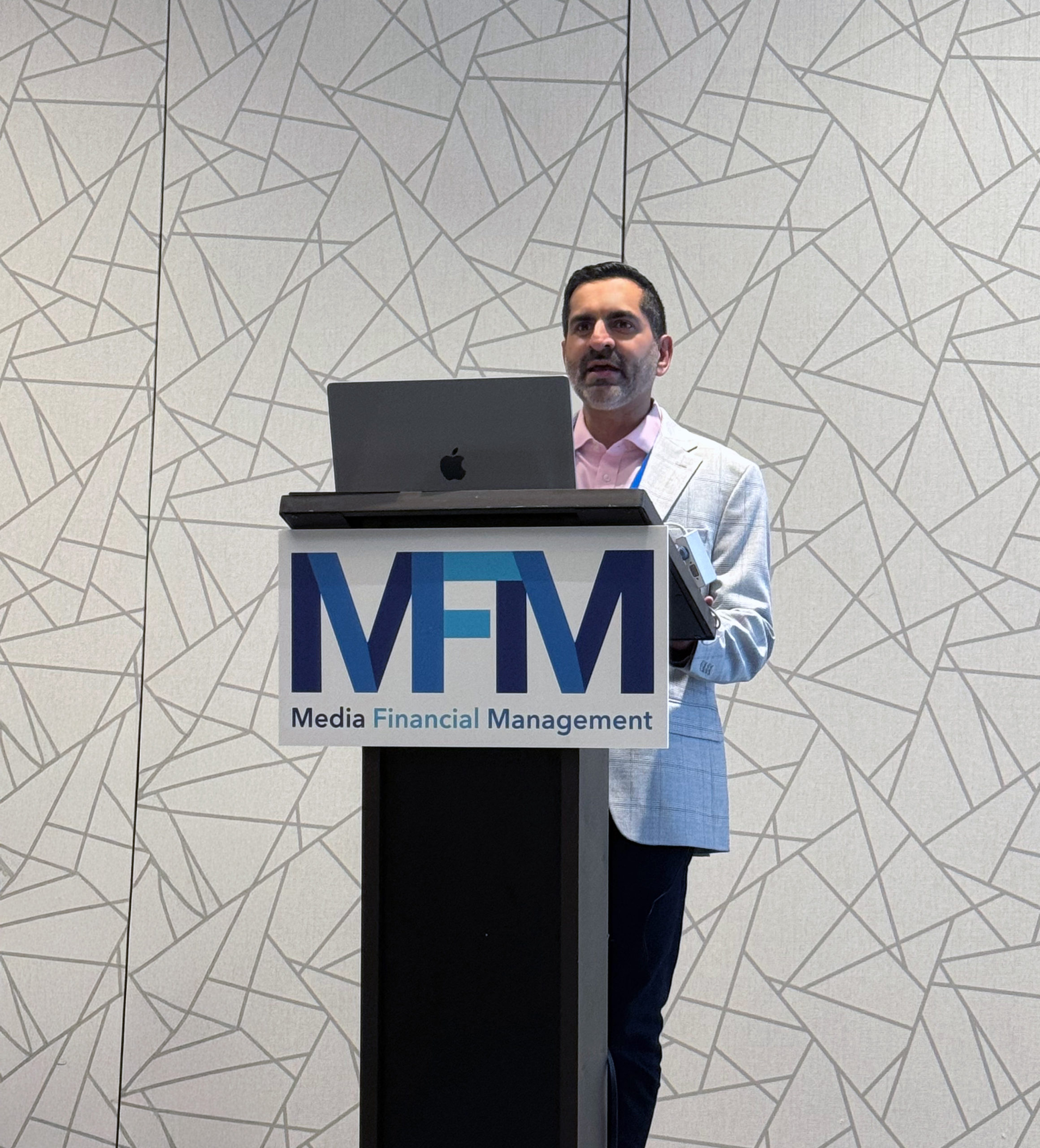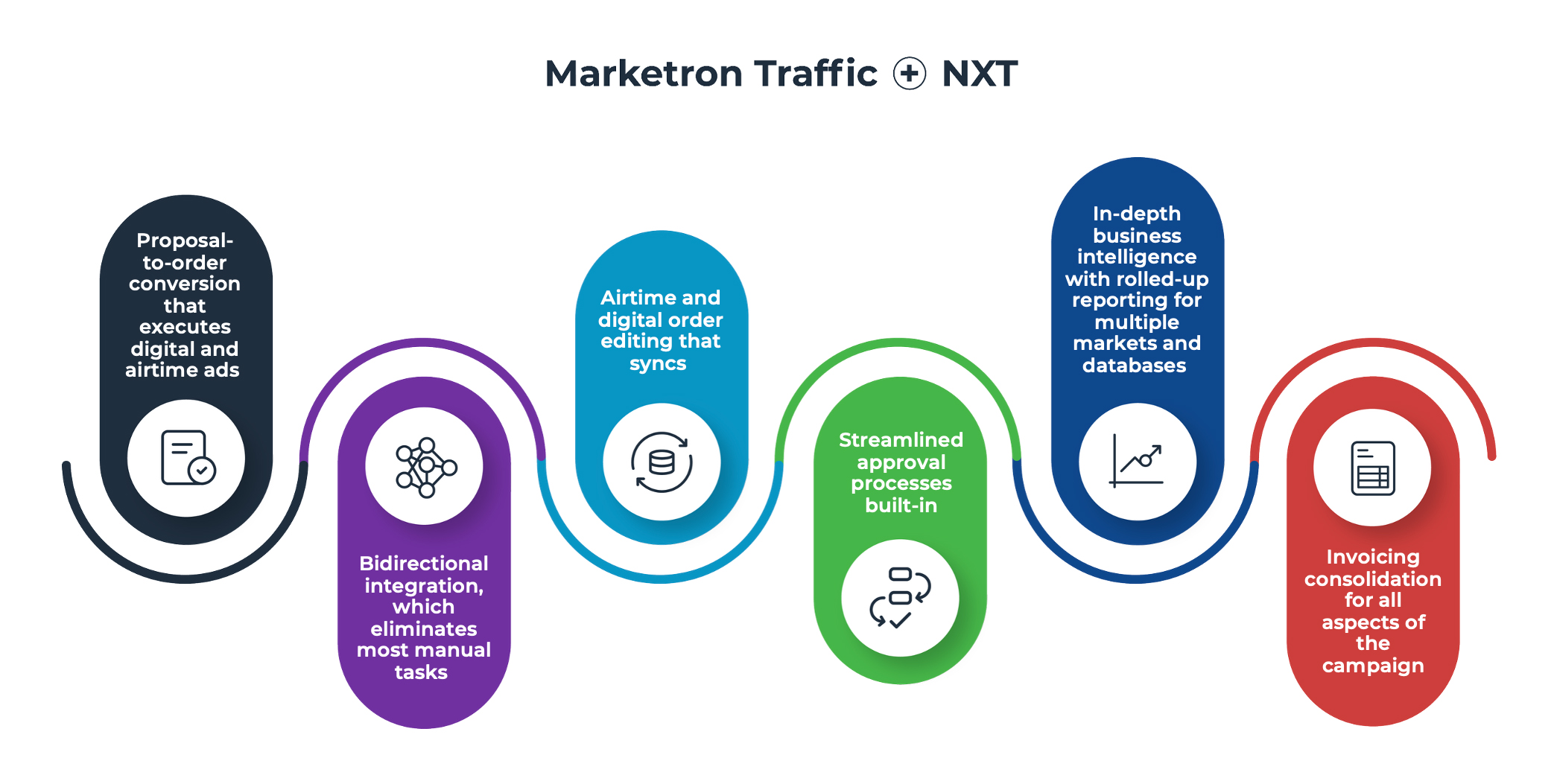At this year’s Media Financial Management (MFM) annual conference, Marketron CEO Jimshade Chaudhari presented a session on efficiency in radio. MFM’s conference drew hundreds of media finance professionals seeking to gain insights, network and solve their biggest challenges. One of the most consequential is the drive to be more efficient in a time when staffing is lean. Technology offers this bridge.

Presentation Highlights Learnings from Marketron’s Radio Traffic Survey
Chaudhari began the presentation with some findings from the company’s radio traffic survey conducted earlier this year.
Efficiency was an overriding theme that included these conclusions:
- 55% of respondents said they had a lean operating structure.
- Lean operators were more likely to have more integrations with their traffic system.
- Only 11.4% of respondents said they had five or more.
- The biggest challenge for those who answered the survey was a lack of integrations.
- Respondents who cited costs as a major challenge had higher percentages of missing integrations and features. A deficit here correlates to less efficiency.
These findings emphasize the desire for efficiency through integration, but challenges persist in achieving a unified ecosystem.
What Are the Barriers to a Fully Integrated Traffic Workflow?
Chaudhari addressed what’s keeping radio from creating an optimally integrated tech stack. He explained that legacy systems and infrastructure are a top concern. Many traffic systems simply don’t have easy ways to connect to other applications.
Real-time data and a lack of accessibility also cause challenges. If the data is stale or not visible, it slows down decision-making and undercuts its value.
Chaudhari also explained that some vendors have high fees for integrations. Even though these vendors have the technical capability to integrate systems, they make it cost prohibitive for most businesses to get a return on investment.
Systems In Silos Increase Manual Work and Inefficiency
The solutions that traffic systems can integrate with are broad. They include digital advertising software, CRMs, automation/playout, airtime rating systems, production tools, financial systems and more.

If they all operate in a silo, data isn’t being shared, workflows aren’t streamlined, and manual work is the norm. It all adds up, impacting efficiency and productivity. While these challenges are present, there are new and innovative solutions.
Workflow Integrations Build a Process from Start to Finish
Chaudhari relayed that the end state to drive efficiency in radio is a workflow integration. It’s more than just the use of APIs. It’s the consolidation of many pieces into one process. These integrations are bidirectional. They also leverage automation, which reduces manual and redundant tasks.
As an example, he discussed the Marketron Traffic and Marketron NXT integration. It’s one workflow for proposals, orders, reporting and billing for airtime and digital ad buys.

Another example reviewed was finance and payment integrations, which are important to the MFM membership. Payment software often lives outside of traffic and digital advertising systems. When it does, it complicates credit, makegoods and errors, which affect invoicing. The impact strains cash flow, causes issues with revenue timing and results in more write-offs.
APIs may be pushing data, but it’s not truly integrated unless it looks like this:

How Does Radio Modernize Its Tech Stack to Drive Efficiency?
The end goal is a tech stack that’s connected. That can include workflow integrations as well as connectors. Connectors are prebuilt for secure data sharing, which the company has invested in, according to Chaudhari. These connectors make it an easy lift to modernize and optimize.
He also spoke about tried-and-true existing steps stations can take and what the future may hold with AI experimentation. Right now, there are likely existing capabilities in your traffic system you may be unaware of, including APIs and workflow integrations.
AI has potential as well, but full-scale deployment involves high effort. It’s easy to create an AI prototype, but it requires considerable work to take a prototype to a production level solution.
Real Stations Experience Real Results
What’s the outcome of using technology to boost efficiency in radio? Chaudhari shared some real-life impact, including:
- Electronic services integrations save stations an average of 300 hours a year.
- Barter integration streamlines reconciliation, providing time savings for employees over 40 hours a month.
- A fully consolidated electronic invoicing and payments solution removes manual paper processes, eliminating 192 hours of labor a year.
What Stations Can Do Right Now
Chaudhari closed the session with actionable steps for stations:
- Evaluate your current systems like they were new.
- Determine workflow gaps and if there are existing features or integrations available.
- Explore training options to introduce users to features that will make them more efficient.
- Look at potential AI use cases and how they may be of benefit and the road to implementation.
- Quantify potential savings from workflow changes.
Marketron is proud to be a platinum sponsor and advocate for MFM. The intelligence and insights shared during the presentation can help stations make a real difference right now!






